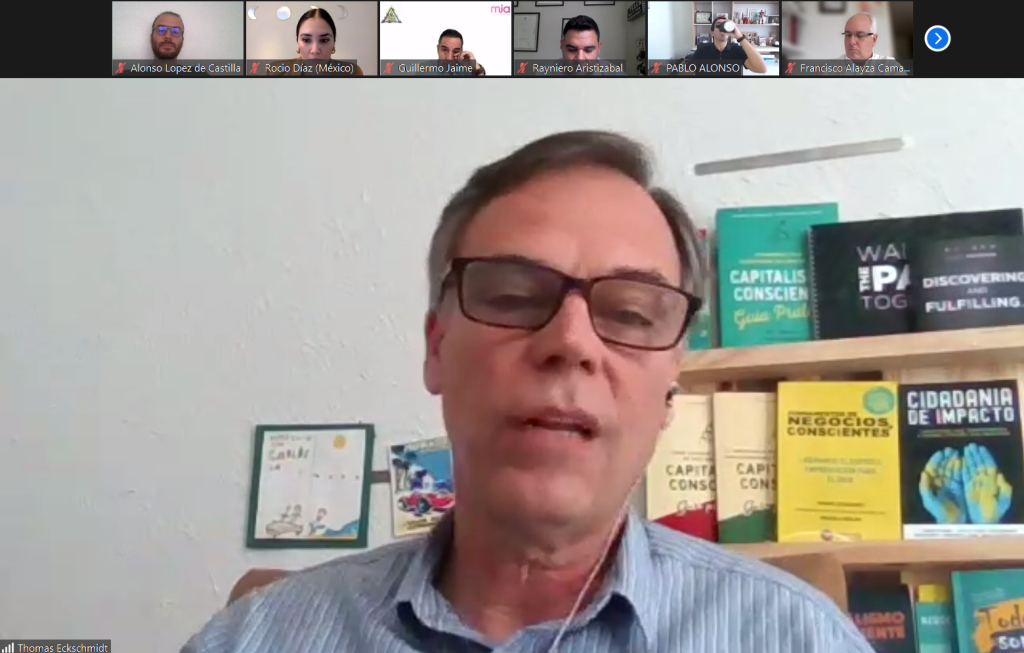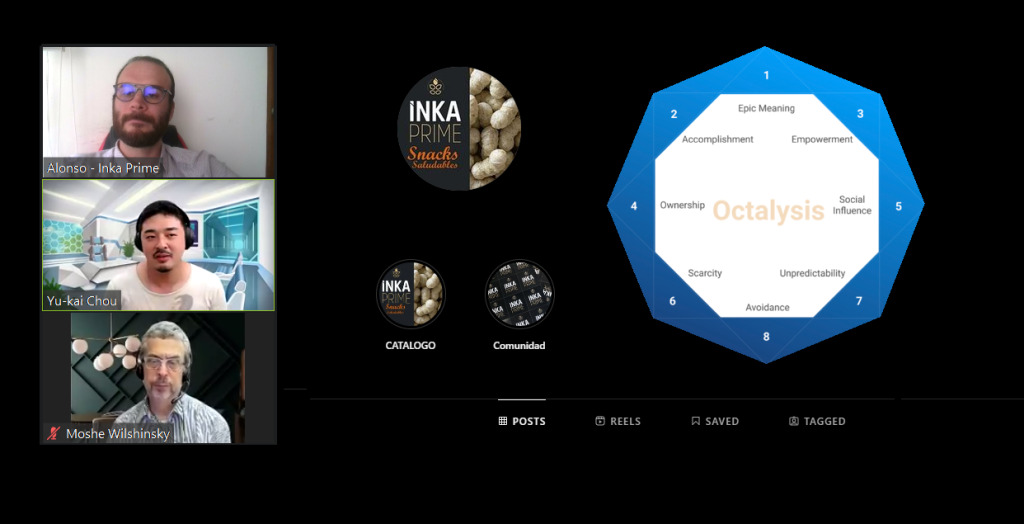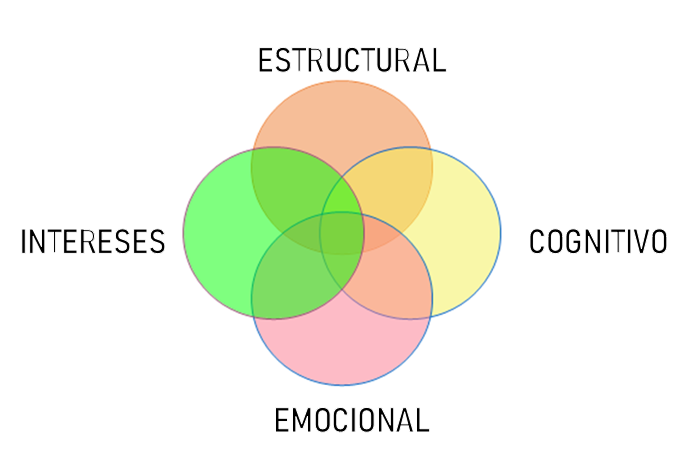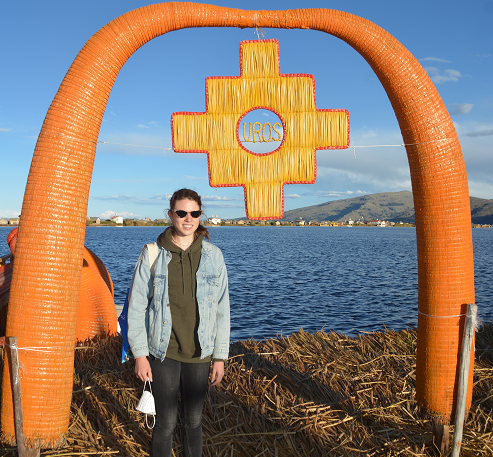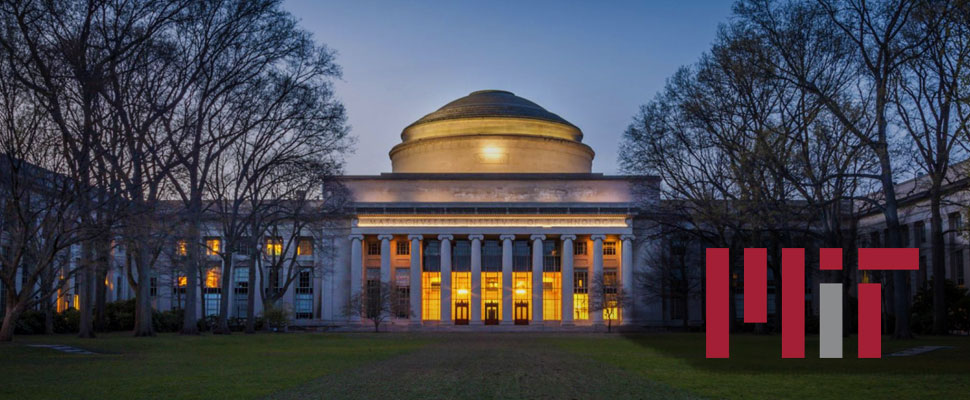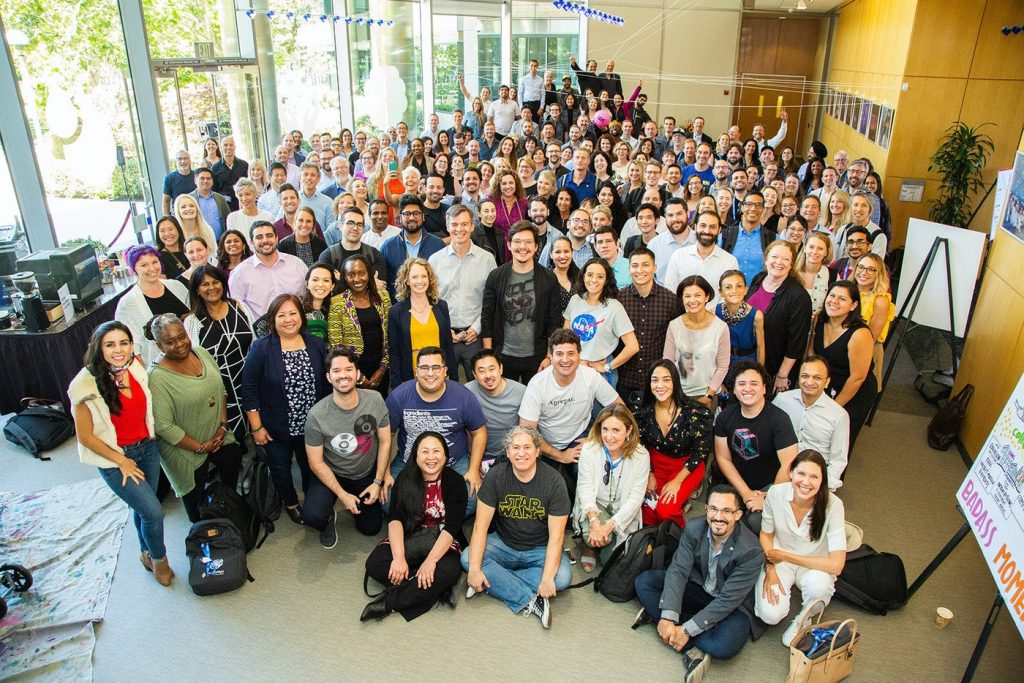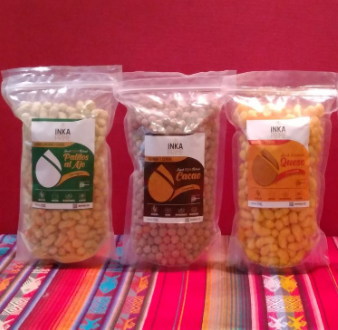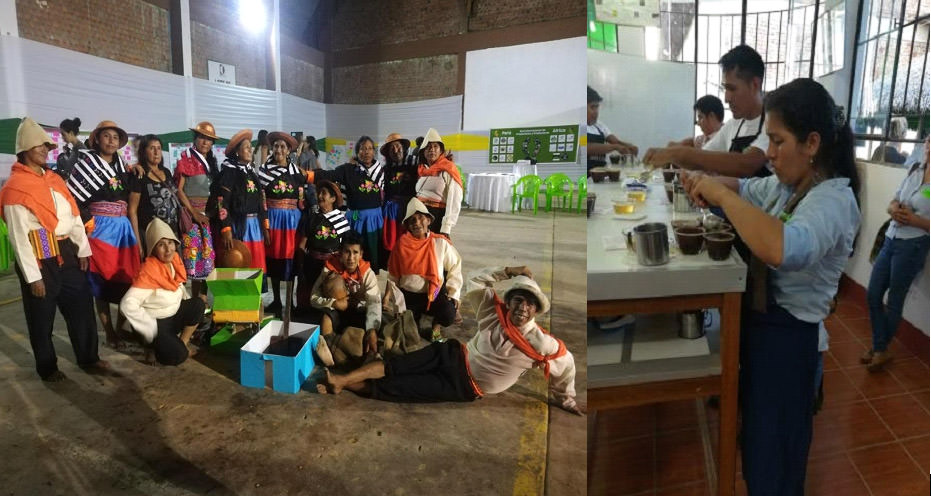INTRODUCTION
In the social sciences, different theoretical approaches compete that are not only distinguished by the problems they typically address or by their research strategies, but also by matters of principle. That is, due to differences in the choice of the categorical framework and its way of conceiving its own object of study. In such differences of strategy, deep conflicts, different conceptions of science and diverse cognitive interests are expressed.
The approach to these efforts, past and present, to consolidate a critical theory of South American development has a double purpose, first of all, to contribute through a retrospective look at the degree of fertility of the various approaches already defined. The second, start a discussion about them. In this way, we will seek to offer a critical theory that can understand the current state and the expectations of development of said discipline. In an approach that places the ideals of productivity, sustainability, justice and freedom at the center of your concerns.
The perspective of this research is that of the South American event; although much of the agreement directly includes all of Latin America, and sometimes, any underdeveloped country. Likewise, there are passages dedicated to the Andean Region, due to unavoidable and necessary reforms. With the frequent example of Peru, which overcomes the two-decade barrier by continuing an economic model; which has been tested against the primary export boom. At the same time, it will try to reflect each country of South America, to a greater or lesser extent, according to the topics of transcendence.
After the Second World War, and until the end of the Cold War, international relations remained bipolar, with the communist bloc and the capitalist as the great powers, military rivals but above all ideological. An incessant struggle to attract allies that saw its end after the fall of the Berlin Wall in the late eighties, consolidating the already evident American hegemony, and turning that balance of powers towards the unipolar order.
At present, due to phenomena such as the Western crisis or the inclusion of new economic and social currents, for many the flow has blurred towards a multipolar divergence. With new actors emerging from cooperation, emerging or transnational economies with ever increasing power. International law has the complicated task of restricting and monitoring the actions of these forces, so that the strongest does not prevail in a despotic condition. However, this has its limits, given the absence of a superior control body. Even in the International Organizations, the countries are the major auditors, and the authority is almost always proportional to the financial flow.
Given the structural changes produced by globalization and new technologies – information, communication, and transport – the geographical space, time and many of the International Relations paradigms have been overcome in many aspects. There are even those who postulate a new apolar order, such as Richard Haas, where the world functions as an individual organism, and the causes for an actor are always the consequences for others.
However, five superpowers account for 75% of global GDP and 80% of defense spending, and large multinational corporations, whose leaders sometimes influence more than heads of government, have increasing influence. Therefore, it is difficult to think of any Latin American relevance if the circumstances remain. Moreover, taking into account that between 1960 and 1995 the region lowered its commercial participation from 8% to 4%. And although it has been growing in some countries, export remains primary-exporter. There are those who suggest that following international mechanisms without ordering from the inside could cure the symptoms and not the disease, or create growth without prosperity.
Under this premise, it should be said that the objective is to propose sustainable solutions, based on international relations and different economic positions of broad political spectra. Thus, synergies can be created between the different political and social economic platforms. For this, it will be necessary to better understand the reason for the South American delay without falling into more ideologies than pragmatism. This supposedly structural delay has been stumbling on the political scene with only two apparent exits: that of sticking to mercantilist mechanisms in a disciplined manner, and that of going against it seeking to blame them for all problems.
In the first place, a brief review will be made of the most important structural antecedents, divided into three parts: starting with the political and ideological bases of Pan-Americanism, in a pendulum formed essentially by Bolívar, Monroe and the promotion of their approaches. This analysis will be followed by a review of the regional commercial history divided into two stages: the post-colonial era, titled Conquest of the independent world, where the main reference will be the Uruguayan author Eduardo Galeano; and the international reforms that emerged after the Second War. The third part will be dedicated to the regional cooperative process, where a large number of proposals will be paraded, of which none has reached particular relevance. South American and Latin American initiatives will precede the American machinery, entitled: North of the Eagle.
The next chapter will address the current regional context, where the main features of the South American landscape will be compiled, from an economic, social and political point of view. Initially, their competitive and organic indices will be treated, through the administrative system of the states and their infrastructure and natural potential of the main actors. Then the issue of poverty and exclusion will be discussed, which is not only a moral issue but also a cultural and productive one, analyzing the pyramidal structure of the area and comparing it with other dissimilar figures in search of bottlenecks.
Once you have a clear idea of this particular reality, a comprehensive analysis will be carried out on the main ideologies and Political-Economic Models that have been taking place in the region and their influences. Among which, neoliberal rights, moderate lefts and the peculiar Socialism of the 21st century stand out.
This analysis will not be limited to government models, since it will seek to understand the behavior and positions of the main political leaders towards their public, revealing the prevailing political-economic modalities and the main perspectives of the electorate. In this way we can better understand the reason for the main state mechanisms and their proposals towards economic growth and towards the most essential human rights, such as freedom, democracy or basic services.
Throughout history, South American political management has been committing continuous errors and excesses, many of them caused by foreign interference, and others, created from within. The lack of regulations and capable and incorruptible officials makes things even more difficult, especially with the existing culture of opportunism and short-termism in the face of widespread ignorance, which arouses various phenomena such as populism, demagogy or patronage.
Another point worth highlighting within this chapter is the institutions and the role they play, as managing and transforming ends of sustainable policies, especially in their quest to preserve democracy; concept that is often misleading given the situation and freedom of action in the face of the individual freedoms of others. This issue is of major relevance given the lack of viability in the area, product of incongruous mechanisms and positions. The Visions of Development in Latin America, edited by José Luis Machinea, ECLAC Executive Secretary, will be especially relevant here; and Narcís Serra, who was Spanish Vice President in the Government of Felipe Gonzales. Book composed by the expositions of different authors.
Likewise, it will show an investigation that I carried out in Lima about the perception of university students, of different socio-economic levels (NSE), about politics and the media. Whose lights will be contrasted with latent political movements and with the main conceptual conceptions.
The last chapter of this project: Development policies in South America, represents its main theme and its outcome. Based on the previous analyzes, it will seek to provide some viable variants for the region, with three parts, different but at the same time interrelated. In the first place, the different contributions of the International Political Economy will be discussed, which through statistics and the main global archetypes have shown that globalized countries, open to free trade and less protectionist have grown more than closed ones and that the developed ones themselves, although accentuating inequality and poverty. Among the material consulted are the Chinese Tales of Andrés Oppenheimer, and the Defense of Global Capitalism of the Swedish Johan Norberg, among others. This phenomenon will also be analyzed from a technical perspective based on recent research, such as those by Helen Milner or Daniel Posner of Princeton and California universities. Before other more skeptical authors such as Nobel Laureate Joseph Stiglitz.
Next, the main State Reforms, necessary to channel these comparative advantages, will be represented, and finally the Paradigms of Latin America will be treated, being education, information and technology. Paraphrasing Michael Foucault, we will also analyze the subjectivities for the maintenance of control immersed in its structure of daily life: education, religion, justice, linguistics, psychology, and especially the media. This theme that will be developed in the actions of state management from their own potentials and desires. Needing people to adhere to the production process instead of being absorbed by it.
In this topic, new technologies will be given major importance, with which people can join the system. Being no less than a type of industrial information, which is necessary to promote the diversification of the productive structure, where a dependency is forged that has no other destiny than to continue increasing to the detriment of the poorest countries.
Theories still in force will be taken into account such as that of John Maynard Keynes who postulated that global demand would produce a regulation of the functioning of the system only through some public interventionism – and a certain role of the unions. Likewise, seemingly disparate positions such as Murray Rothard, father of extreme capitalism and modern liberalism, will be analyzed, demonstrating that both sides can be taken advantage of without contradicting each other, provided all possible implications are taken into consideration.
With these transcendencies in mind, contributions more closely related to the objective of the project will be discussed, such as those of the New Economic Theory and Intra-Industrial Commerce. As Paul Krugman, Nobel Prize in Economics 2008, postulates, with the diversification of geographic production chains. Other important targets would be high-definition globalization through R&D, economies of scale and productive chains or “clusters” promoted by Harvard University researcher Michael Porter.
These economic models would then be adapted to the regional structure through Internal Reforms, seeking sustainable development by analyzing the possible variables available without falling into conventional models.
This base will be the gear of the integration attempt proposed in the State Cooperative theme, where these mechanisms will be adapted to the idea of a solidarity South America and organized through a set of common proposals, and in search of the consolidation of forces, resources and prospects This system could take years to build, however, the idea is progressive, through regional policies developed for the long term.
A union will be raised that you gave of simple cooperation, seeking to go further. A procedure will be tried in which individual interests are not sought but rather the common one. Focusing the potentialities in an organic project, and leaving concrete foundations for a prosperous and sustainable economic development. Safeguarding social and ecological integrity, cultural diversity and sovereignty.
In the first part, Project and Constitution will set out the bases and objectives of the Cooperative. Taking external models in order to delimit the regulatory potential and the governance system. This will require political initiative, a comprehensive communication system and regional referendums; likewise visionary elites, where the integration of the poor into capitalism can materialize in economic benefits for all in the medium and long term. Without neglecting the most essential human rights, which deny dignity and also bring conflicts and bottlenecks. It must be understood that between development and underdevelopment there is not only a difference of stages but of functions. The disadvantage may lie in not participating in progress with its own programs and objectives.
This will be achieved by organizing the region inwards and generating efficient relationships outwards. Minimizing tariffs and borders through an efficient commercial strategy, strengthening trade in processed goods, services and the cultural industry – not under the setbacks of Critical Theory but respecting the identity and promoting the usefulness of the product. Under these premises the region can then be integrated into the entire world, as an active member and not as a piece within superior compounds.
The second part includes the mechanisms of Joint Management, where through state policies linked to strategic investments, both public and joint, will seek to promote growth and sustainability. Foreign direct investment, which will not be sought to exclude, will have a new position in the region through its reorganization and new interference. In this relationship, non-governmental organizations (NGOs) will also be especially important, as a social and institutional catalyst and International Organizations as a management thermometer and think tanks. This archetype will be achieved through strong institutions, which will be highlighted and developed in the following section.
Once this Regional Plan materializes, I will postulate the social and productive issue, seen not as a populist distribution but as the true structural economic engine. Here the political scientist Robert Putnam acquires relevance, with his work on trust, civic awareness and social capital. This analysis will be carried out through developmental tools, both economic and sociological, and with a plan to reintegrate the poor and unemployed population, since development is the result of mobilization, the interaction of social groups and classes, whose opposition, conciliation or overcoming gives life to the socioeconomic system.
In the first instance, from the political sphere through direct action and semi-participatory democracy, with adequate access to politics, information and a competent anti-corruption apparatus. Likewise, the issue of natural resources and territory will be addressed, through the investigation of the mechanisms of private property and governance in common goods, of the Peruvian economist Hernando de Soto with his Other Path, and of the current Nobel in Economics and first woman in award-winning, Elinor Ostrom.
As a second component, in the managerial field, with Entrepreneurship Institutions and productive Infrastructures; through cooperatives monitored by the government, where the private sector would also participate. Renowned linguist and activist Noam Chomsky presupposes these initiatives as the ability of normal people to unite their limited resources, forming and developing ideas and programs, including them in a political agenda and acting in their support. These systems will have room to encourage microcredits, small businesses and the added value in manufactured products.
Economic progress is but a requirement to achieve development, which must be measured by individual freedoms, as indicated by Amartya Sen, Nobel Prize in Economics 1998. The hypothesis would show that “a South American bloc would increase the level of development and well-being through adequate mechanisms, without relying on other actors or staying in isolation. Ensuring sustainable internal growth by incorporating the poor into the system. ”
STRUCTURAL BACKGROUND
1) Ideological and political bases of Pan Americanism …………………………….… .13
2) From Extraction Trade to Post-War Reforms
2.1) Conquering the independent world …………………………………… 19
2.2) International Organizations: Help or Dependency ……………… 26
3) Continental Cooperative Process
3.1) Latin America: Parts of a set or set of parts? ………… 28
3.2) The North of the Eagle …………………………………………………………… 31
CURRENT REGIONAL OVERVIEW
1) Technical and Cultural Context
1.1) Competitive and Organic Indices …………………………………………… 34
1.2) Bottlenecks: Extreme Poverty and Exclusion …………………………… 47
2) Politics and Democracy
2.1) Political-Economic Models
a) Map and Circumference ………………………………………………….… 57
b) The two faces of liberalization: Colombia and Peru, and Chile ……………… 62
c) The left resurfaces: Argentina, Uruguay and Paraguay, Brazil ………… .66
d) Socialism of the 21st century: Venezuela, Ecuador and Bolivia …………… ..78
2.2) Patterns and Concepts
a) Research on Lima university students ……………………………… .98
b) Definitions and Perceptions …………………………………………… 103
DEVELOPMENT POLICIES FOR SOUTH AMERICA
1) International Political Economy
1.1) Economic liberalization
a) Liberalism …………………………………………………………… 108
b) The capitalist boom ………………………………………………… ..111
c) The Peruvian miracle? …………………………………………………… .116
d) Wings and Barriers …………………………………………………… 120
1.2) State reforms
a) The Economic Model ………………………………………………….… 125
b) Structural Reforms ………………………………………………… ..127
c) Competitiveness Tools ………………………………………… 132
d) Resources and Institutions ……………………………………………… ..… 143
1.3) Latin American paradigms
a) The Information ……………………………………………………… 148
b) Education …………………………………………………………… ..151
c) Technology …………………………………………………………… 158
2) State Cooperative
2.1) Project and Constitution
a) Macroeconomic Prerogatives .. …………………………………… 162
b) The European Experience and Operational Convenience…. ……. ………… 171
c) Ecological situation ……………………………………………………… 177
d) Regional Regulations …………………………………………………. …… 181
2.2) Joint Management
a) States ………………………………………………………………… ..… 185
State Marketing
Natural resources
b) Private Sector …………………………………………………………… .194
c) Organizations …………………………… .. ………………………… 197
SOCIAL AND INSTITUTIONAL POLICIES
1) Direct Action and Governance of common goods ………………………… .199
2) Entrepreneurship institutions and productive infrastructures ……………… 208
BIBLIOGRAPHY ……………………………………………………………………… ..… 220
Original:
INTRODUCCIÓN
En las ciencias sociales compiten diversos planteamientos teóricos que no sólo se distinguen por los problemas que típicamente abordan ni por sus estrategias de investigación, sino por cuestiones de principio. Es decir, por diferencias en la elección del marco categorial y su modo de concebir su propio objeto de estudio. En tales diferencias de estrategia se expresan conflictos profundos, distintas concepciones de la ciencia e intereses cognoscitivos diversos.
El acercamiento a estos esfuerzos, pasados y presentes, por consolidar una teoría crítica del desarrollo sudamericano tiene un doble propósito, en primer lugar, el de contribuir a través de una mirada retrospectiva el grado de fecundidad de las diversos planteamientos ya delimitados. El segundo, entablar una discusión sobre los mismos. De este modo, se buscará ofrecer una teoría crítica que pueda entender el estado actual y las expectativas de desarrollo de dicha disciplina. En una aproximación que sitúe en el centro de sus preocupaciones los ideales de productividad, sostenibilidad, justicia y libertad.
La perspectiva de esta investigación es la del acontecer sudamericano; aunque mucho de lo tratado comprende directamente a toda Latinoamérica, y en ocasiones, a cualquier país subdesarrollado. Así mismo, hay pasajes dedicados a la Región Andina, debido a reformas ineludibles y necesarias. Con el ejemplo frecuente del Perú, que supera la barrera de dos décadas al continuar un modelo económico; el cual viene siendo puesto a prueba ante el auge primario exportador. Al mismo tiempo, se tratará de reflejar cada país de Sudamérica, en mayor o menor medida, según los tópicos de trascendencia.
Tras la Segunda Guerra Mundial, y hasta el final de la Guerra fría, las relaciones internacionales se mantuvieron bipolares, con el bloque comunista y el capitalista como las grandes potencias, rivales militares pero sobretodo ideológicos. Una pugna incesante por atraer aliados que vio su fin tras la caída del Muro de Berlín a fines de los ochentas, consolidando la ya evidente hegemonía estadounidense, y tornando aquel balance de poderes hacia el orden unipolar.
En la actualidad, debido a fenómenos como la crisis occidental o inclusión de nuevas corrientes económicas y sociales, para muchos el flujo se ha difuminado hacia una divergencia multipolar. Con nuevos actores surgidos de la cooperación, las economías emergentes o las transnacionales con un poder siempre creciente. El derecho internacional tiene la complicada tarea de restringir y monitorear el accionar de estas fuerzas, de modo que no prevalezca el más fuerte en condición déspota. Sin embargo, este tiene sus límites, dada la inexistencia de un organismo superior de control. Incluso en los Organismos Internacionales son los países los grandes fiscalizadores, y la autoridad es casi siempre proporcional al flujo financiero.
Dados los cambios estructurales producidos por la globalización y las nuevas tecnologías -de la información, la comunicación, y el transporte- se ha superando en muchos aspectos al espacio geográfico, al tiempo y a muchos de los paradigmas de las Relaciones Internacionales. Incluso hay quienes postulan un nuevo orden apolar, como Richard Haas, donde el mundo funciona como organismo individual, y las causas para un actor son siempre las consecuencias para otros.
Sin embargo, cinco superpotencias acaparan el 75% del PIB mundial y el 80% del gasto en defensa, y las grandes corporaciones multinacionales, cuyos dirigentes a veces influyen más que los jefes de gobierno, tienen cada vez mayor influencia. Por ello, resulta complicado pensar en alguna relevancia latinoamericana si las circunstancias permanecen. Más aún si se tiene en cuenta que entre 1960 y 1995 la región bajó su participación comercial de 8% a un 4%. Y aunque viene creciendo en algunos países, la exportación se mantiene primaria-exportadora. Hay quienes sugieren que seguir mecanismos internacionales sin ordenarse por dentro podría curar los síntomas y no la enfermedad, o crear crecimiento sin prosperidad.
Bajo esta premisa, habría que decir que se tiene como objetivo el de proponer soluciones sostenibles, basándose en las relaciones internacionales y en diferentes posturas económicas de amplios espectros políticos. De manera se puedan crear sinergias entre las diferentes plataformas económicas políticas y sociales. Para ello, será necesario comprender mejor el porqué del retraso sudamericano sin caer en más ideologías que el pragmatismo. Este retraso, supuestamente estructural, ha venido tropezando en la escena política con dos únicas salidas aparentes: la de atenerse a mecanismos mercantilistas de manera disciplinada, y la de ir en su contra buscando culparlos por todos los problemas.
En primer lugar se hará un breve repaso por los antecedentes estructurales más trascendentes, divididos en tres partes: empezando por las bases políticas e ideológicas del panamericanismo, en un péndulo conformado esencialmente por Bolívar, Monroe y la promoción de sus enfoques. Este análisis será sucedido por un repaso en la historia comercial regional dividido en dos tiempos: la era poscolonial, de título Conquista del mundo independizado, donde el principal referente será el autor uruguayo Eduardo Galeano; y las reformas internacionales surgidas después de la Segunda Guerra. Se dedicará la tercera parte al proceso cooperativo regional, donde desfilará una abultada cantidad de propuestas de las que ninguna ha alcanzado particular relevancia. Iniciativas sudamericanas y latinoamericanas antecederán a la maquinaría estadounidense, en el titulado: Norte del Águila.
El siguiente capítulo abordará el contexto regional actual, donde se compilarán las principales características del panorama sudamericano, desde el punto de vista económico, social y político. Inicialmente se tratarán sus índices competitivos y orgánicos, pasando por el sistema administrativo de los estados y sus potencialidades infraestructurales y naturales de los principales actores. Luego se tratara el tema de la pobreza y la exclusión, que no es solo un tema moral sino también cultural y productivo, analizando la estructura piramidal del la zona y comparándola con otras figuras disimiles en busca de cuellos de botella.
Una vez se tenga una idea clara de esta realidad particular, se realizará un análisis integral sobre las principales ideologías y Modelos Político-Económicos que se vienen dando en la región y sus influencias. Entre los cuales destacan, las derechas neoliberales, las izquierdas moderadas y el peculiar Socialismo del siglo XXI.
Este análisis no se limitará a modelos de gobierno, ya que buscará entender el comportamiento y las posturas de los principales líderes políticos hacia su público, develando las modalidades político-económicas imperantes y las principales perspectivas del electorado. De esta manera podremos entender mejor el porqué de los principales mecanismos de estado y sus propuestas hacia el crecimiento económico y hacia los más esenciales derechos humanos, como la libertad, la democracia o los servicios básicos.
A lo largo de la historia, la gestión política sudamericana ha venido cometiendo continuos errores y excesos, muchos de ellos provocados por intromisiones extranjeras, y otros, gestados desde su interior. La carencia de una normativa y de funcionarios capaces e incorruptibles dificulta aún más las cosas, sobre todo con la cultura existente de oportunismo y el cortoplacismo ante la ignorancia generalizada, que despierta diversos fenómenos como el populismo, la demagogia o el mecenazgo.
Otro punto que vale la pena resaltar dentro de este capítulo son las instituciones y el rol que desempeñan, como extremidades gestoras y transformadoras de políticas sostenibles, sobretodo en su búsqueda por preservar la democracia; concepto que muchas veces resulta engañoso dada la coyuntura y la libertad de acción ante las libertades individuales ajenas. Este tema resulta de principal relevancia dada la falta de viabilidad en la zona, producto de mecanismos y posturas incongruentes. Aquí tendrán especial relevancia las Visiones del Desarrollo de América Latina, editado por José Luis Machinea, Secretario Ejecutivo de la CEPAL; y Narcís Serra, quien fuera Vicepresidente español en el Gobierno del Felipe Gonzales. Libro compuesto mediante las exposiciones de deferentes autores.
Así mismo, se mostrará una investigación que realicé en Lima sobre la percepción de los estudiantes universitarios, de diferentes niveles socio-económico (NSE), acerca de la política y los medios de comunicación. Cuyas luces serán contrastadas con los movimientos políticos latentes y con las principales concepciones conceptuales.
El último capítulo de este proyecto: Políticas de desarrollo en Sudamérica, representa su temática principal y su desenlace. Sustentándose en los análisis anteriores buscará aportar algunas variantes viables para la región, contando con tres partes, diferentes pero a la vez interrelacionadas. En primer lugar, se tratarán los diferentes aportes de la Economía Política Internacional, que mediante las estadísticas y los principales arquetipos globales ha demostrado que los países globalizados, abiertos al libre comercio y menos proteccionistas han crecido más que los cerrados y que los propios desarrollados, aunque acentuando la desigualdad y la pobreza. Entre el material consultado se encuentran los Cuentos Chinos de Andrés Oppenheimer, y la Defensa del Capitalismo Global del sueco Johan Norberg, entre otros. Así mismo se analizará este fenómeno desde una perspectiva técnica en base a investigaciones recientes, como las de Helen Milner o Daniel Posner de las universidades de Princeton y California. Ante otros autores más escépticos como el laureado nobel Joseph Stiglitz.
A continuación se representarán las principales Reformas Estatales, necesarias para canalizar estas ventajas comparativas, y finalmente se tratarán los Paradigmas de América Latina, siendo la educación, la información y la tecnología. Parafraseando a Michael Foucault, se analizarán así mismo las subjetividades para el mantenimiento del control inmersas en su estructura de la cotidianeidad: la educación, la religión, la justicia, la lingüística, la psicología, y sobre todo los medios de comunicación. Este tema que será desarrollado en el accionar de la gestión estatal desde sus propias potencialidades y deseos. Necesitando que las personas se adhieran al proceso productivo en lugar de ser absorbido por él.
En este tema se le dará principal importancia a las nuevas tecnologías, con la que las personas podrán incorporarse al sistema. Siendo está no menos que un tipo de información industrial, la cual es necesaria para promover la diversificación de la estructura productiva, donde se forja una dependencia que no tiene otro destino que el de seguir aumentando para perjuicio de los países más pobres.
Se tendrán también en cuenta teorías aún vigentes como la de John Maynard Keynes quién postulaba que la demanda global produciría una regulación del funcionamiento del sistema solo a través de algún intervencionismo público -y un cierto papel de los sindicatos-. Así mismo, se analizarán posturas aparentemente dispares como la de Murray Rothard, padre del capitalismo extremo y del liberalismo moderno, demostrando que se le puede sacar provecho a ambas vertientes sin necesidad de contradecirse, siempre y cuando se tome en consideración todas las posibles implicancias.
Con estas trascendencias en mente, se tratarán aportes más ligados al objetivo del proyecto, como los de la Nueva Teoría económica y el Comercio Intraindustrial. Como lo postula Paul Krugman, Nobel de Economía 2008, con la diversificación de las cadenas de producción geográficas. Otros blancos importantes sería la globalización de alta definición mediante la I+D, las economías de escala y los encadenamientos productivos o “clusters” promocionados por el investigador de la Universidad de Harvard Michael Porter.
Estos modelos económicos serían luego adaptados a la estructura regional por medio de las Reformas Internas, buscando un desarrollo sostenible mediante el análisis de las posibles variables con que se cuenta sin caer en los modelos convencionales.
Esta base será el engranaje de la tentativa de integración propuesta en el tema de Cooperativa Estatal, donde se adaptarán estos mecanismos a la idea de una Sudamérica solidaria y organizada mediante un conjunto de propuestas comunes, y en busca de la consolidación de fuerzas, recursos y perspectivas. Este sistema podría tardar años en edificarse, sin embargo, la idea es progresiva, mediante políticas regionales elaboradas para el largo plazo.
Se planteará una unión que diste de la simple cooperación, buscando ir más allá. Se ensayará un procedimiento en el que no se busquen intereses individuales sino más bien el común. Enfocando las potencialidades en un proyecto orgánico, y dejando cimientos concretos para un desarrollo económico próspero y sostenible. Salvaguardando la integridad social y ecológica, la diversidad cultural y la soberanía.
En la primera parte, Proyecto y Constitución se plantearán las bases y objetivos de la Cooperativa. Tomando modelos externos con el fin de delimitar la potencial normativa y el sistema de gobernanza. Para ello será necesario iniciativa política, un sistema de comunicación integral y referéndums regionales; así mismo elites visionarias, donde la integración de los pobres al capitalismo se pueda materializar en beneficios económicos para todos en el mediano y largo plazo. Sin descuidar los derechos humanos más esenciales, que niegan la dignidad y que además traen conflictos y cuellos de botella. Tiene que comprenderse que entre desarrollo y el subdesarrollo no hay sólo una diferencia de etapas sino de funciones. La desventaja quizás radique en no participar del progreso con programas y objetivos propios.
Esto se conseguirá organizando la región hacia dentro y generando relaciones eficientes hacia fuera. Minimizando aranceles y fronteras mediante una estrategia mercantil eficiente, fortaleciendo el comercio de bienes elaborados, de servicios y la industria cultural -no bajo los contratiempos que postula la Teoría crítica sino respetando la identidad y fomentando la utilidad del producto-. Bajo estas premisas la región podrá integrarse luego al mundo entero, como un miembro activo y no como una pieza dentro de compuestos superiores.
La segunda parte comprende los mecanismos de la Gestión Conjunta, donde mediante políticas estatales vinculadas a inversiones estratégicas, tanto públicas como mancomunadas, se buscará promover el crecimiento y la sostenibilidad. La inversión extranjera directa, a la que no se buscará excluir, tendrá una nueva postura en la región mediante su reorganización y nuevas injerencias. En esta relación tendrán también especial importancia las Organizaciones no gubernamentales (ONG), como catalizador social e institucional y las Organizaciones Internacionales como termómetro de la gestión y cubil de los think tanks. Este arquetipo se logrará materializarse mediante instituciones fuertes, las cuales se destacarán y se desarrollarán en el siguiente apartado.
Una vez que se materializado este Plan regional postularé el tema social y productivo, vistos no como una repartición populista sino como al verdadero motor económico estructural. Aquí adquiere relevancia el politólogo Robert Putnam, con su trabajo sobre confianza, conciencia cívica y capital social. Este análisis se realizará mediante herramientas desarrollistas, tanto económicas como sociológicas, y con un plan para reintegrar a la población pobre y desocupada, ya que el desarrollo es el resultado de la movilización, la interacción de grupos y clases sociales, cuya oposición, conciliación o superación da vida al sistema socioeconómico.
En primera instancia, desde el ámbito político mediante la acción directa y la democracia semiparticipativa, contando con un acceso adecuado a la política, a la información y a un aparato competente anticorruptor. Así mismo se abordará el tema de los recursos naturales y el territorio, mediante la investigación de los mecanismos de propiedad privada y gobernanza en bienes comunes, del economista peruano Hernando de Soto con su Otro Sendero, y de la actual Nobel en Economía y primera mujer en galardonada, Elinor Ostrom.
Como segundo componente, en el ámbito gerencial, con Instituciones de emprendimiento y Infraestructuras productivas; mediante cooperativas monitoreadas por el gobierno, en donde participaría también el sector privado. El renombrado lingüista y activista Noam Chomsky presupone estas iniciativas como la capacidad de la gente normal para unir sus limitados recursos, formando y desarrollando ideas y programas, incluyéndolos en agenda política y actuando en su apoyo. Estos sistemas tendrán cabida a incentivar los microcréditos, las pequeñas empresas y el valor agregado en productos manufacturados.
El progreso económico no es sino un requisito para alcanzar el desarrollo, el cual debe ser medido por las libertades individuales, como lo señala Amartya Sen, Nobel de Economía 1998. La hipótesis demostraría que “un bloque sudamericano aumentaría el nivel de desarrollo y bienestar mediante los mecanismos adecuados, sin depender de otros actores ni mantenerse en aislamiento. Asegurando el crecimiento sostenible interno mediante la incorporación de los pobres al sistema.”
ANTECEDENTES ESTRUCTURALES
1) Bases ideológicas y políticas del panamericanismo…………………………….….13
2) Del Comercio de extracción a las Reformas posguerra
2.1) A la conquista del mundo independizado……………………………………19
2.2) Las Organizaciones Internacionales: Ayuda o Dependencia………………26
3) Proceso Cooperativo Continental
3.1) ¿Latinoamérica: Partes de un conjunto o un conjunto de partes?…………28
3.2) El Norte del Águila……………………………………………………………31
PANORAMA REGIONAL ACTUAL
1) Contexto Técnico y Cultural
1.1) Índices Competitivos y Orgánicos……………………………………………34
1.2) Cuellos de botella: Pobreza extrema y Exclusión……………………………47
2) Política y Democracia
2.1) Modelos Político-Económicos
a) Mapa y Circunferencia………………………………………………….…57
b) Las dos caras de la liberalización: Colombia y Perú, y Chile………………62
c) Resurge la izquierda: Argentina, Uruguay y Paraguay, Brasil………….66
d) El Socialismo del siglo XXI: Venezuela, Ecuador y Bolivia……………..78
2.2) Patrones y Conceptos
a) Investigación sobre universitarios limeños……………………………….98
b) Definiciones y Percepciones………………………………………………103
POLÍTICAS DE DESARROLLO PARA SUDAMÉRICA
1) Economía Política Internacional
1.1) La Liberalización económica
a) El liberalismo………………………………………………………………108
b) El Auge capitalista………………………………………………………..111
c) ¿El milagro peruano? …………………………………………………….116
d) Las Alas y las Barreras……………………………………………………120
1.2) Reformas estatales
a) El Modelo Económico………………………………………………….…125
b) Reformas Estructurales…………………………………………………..127
c) Herramientas de Competitividad…………………………………………132
d) Recursos e Instituciones………………………………………………..…143
1.3) Paradigmas latinoamericanos
a) La Información……………………………………………………………148
b) La Educación……………………………………………………………..151
c) La Tecnología………………………………………………………………158
2) Cooperativa Estatal
2.1) Proyecto y Constitución
a) Las Prerrogativas macroeconómicas..……………………………………162
b) La Experiencia europea y la Conveniencia operativa….…….…………171
c) Coyuntura Ecológica………………………………………………………177
d) Normativa Regional………………………………………………….……181
2.2) Gestión Conjunta
a) Estados…………………………………………………………………..…185
Marketing Estatal
Recursos Naturales
b) Sector Privado…………………………………………………………….194
c) Las Organizaciones……………………………..…………………………197
POLÍTICAS SOCIALES E INSTITUCIONALES
1) La Acción directa y la Gobernanza de bienes comunes………………………….199
2) Instituciones de emprendimiento e Infraestructuras productivas………………208
BIBLIOGRAFÍA………………………………………………………………………..…220


